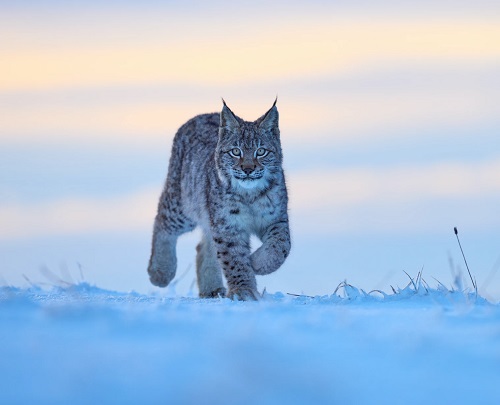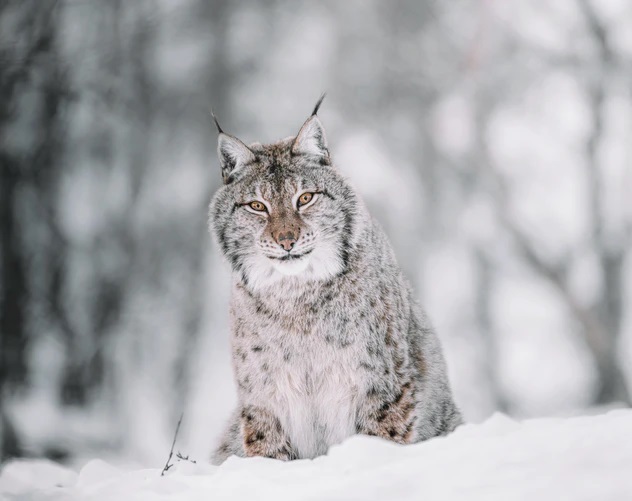Could a new study be the first step in Britain’s most exciting rebuilding project? Hanna Lindon takes a look.
Earlier this year, conservationists launched a year-long study file evaluating the social feasibility of the lynx’s return to Scotland. The Eurasian lynx was driven to extinction in Britain more than 500 years ago by hunting and habitat depletion. Now a group of charities – Scotland: The Big Picture (STBP), Trees for Life and Vincent Wildlife Trust – want to gauge the public’s appetite for the reintroduction of Europe’s third largest predator.
“This is not a campaign to reintroduce the lynx, although we do not hide the fact that we would like to go back,” says Peter Cairns, executive director of STBP. “It is a social feasibility study. The goal is to accurately assess public and stakeholder support for the lynx – or even not. And also to identify any existing common barriers and how they could be overcome with a collaborative approach “.
A fundamental first step
The suggestion that the lynx could be returned to the Scottish Highlands and other remote areas of Britain is not new in itself. The idea was first discussed in Scotland in 2008, and in 2018 the release of six animals was proposed in the government rejected Northumberland. Previous studies did model what the reintroduction of the lynx to Scotland might look like and estimated how many animals the Scottish countryside could support.
However, this new study is a vital first step in obtaining an official license for any reintroduction.
“The process [for reintroductions] is to make a license request from the legal licensing body – which in our case is NatureScot – and to do that you must first demonstrate that there is social acceptance and tolerance for any species, especially a large predator, ”says Peter. “So it is necessary in legal as well as philosophical terms, because without the support of the people the process is much more difficult, if not impossible.”
Lynx in the landscape
The Lynx to Scotland study will begin by focusing on two areas that have been identified as suitable habitat for the lynx: the Cairngorms and Argyll. Both have large populations of roe deer, which are currently only controlled through human intervention.
“The cost of managing deer across Scotland is enormous,” Peter points out. “Forestry and the Scottish land spend huge amounts of money on culling deer from the woods. Then there is the cost of deer fencing inside and out. But the lynx is a free and efficient deer management service. They regulate the number of herbivores and from an ecological point of view they are recognized as vital engines of healthy ecosystems “.
By dispersing deer in the landscape and leaving the remains of the killings for smaller animals to feast on, the lynx could both control deer numbers and improve biodiversity across Scotland. Ultimately, this could even lead to visible changes to the landscape itself.
“They won’t quickly transform the landscape and it’s unlikely there will be a radical impact that we couldn’t reasonably imagine,” says Peter. “But for a period of time I think they would restore the ecological processes that are missing across Britain, even if in visual terms it will be nuanced and rather slow.”
Walk with wild cats
Lynx to Scotland researchers will consult with stakeholders such as farmers, landowners, ghillies, gamekeepers and tourism operators, but the plan is also to gather the opinion of those who visit and enjoy the Scottish countryside.
Most organizations agree that the lynx poses no threat to humans. According to the Lynx UK Trust, there are no recorded attacks on humans by Eurasian lynxes anywhere in the world. So what interaction would the walkers have with these secret creatures if they were to be reintroduced to the Highlands?
“A sighting would be a rare occurrence,” says Peter. “You could walk the hills for many years in the lynx region without seeing a lynx. They are woodland animals: they rely on cover to stay hidden. That’s not to say you wouldn’t see evidence of it. They tend to hide their prey, so if you were walking a mountain path you might smell a roe that had been hidden by a lynx. It is also possible that you can see the tracks. ”
Despite little chance of sighting, evidence from other countries where the lynx has been introduced suggests that the charismatic feral cats are a major tourist attraction – another argument in support of their reintroduction.
The long road to release
Although previous investigations have suggested that the wider Scottish public is largely in favor of the reintroduction of the lynx, there is likely to be resistance from local farmers and landowners. NFU Scotland has already stated that “any proposal to reintroduce predators such as the lynx or the wolf is of enormous concern to Scottish farmers and ranchers”. The organization cited reports from Norway of hill farmers giving up their livestock due to lynx predation.
Peter believes these concerns are misplaced. He points out that Norwegian sheep are found in forests and that predation is therefore exponentially higher in the Scandinavian country than anywhere else in Europe. “A more comparable example would be Switzerland,” he suggests, “where they lose some 70 sheep a year across the country.”
Regardless of whether such opposition is well founded, it is still the biggest barrier that lynx reintroduction advocates have to overcome. According to Dr David Hetherington, author of The Lynx and Us, reintroductions to Bavaria and Austria in the 1980s failed because local hunters were against them and many of the rescued animals were killed. Similar concerns would exist if the lynx were returned to Scotland without the support of rural communities. Could they suffer the same fate as the Last Golden Eagle of Wales?
“This is a conversation that has been going on for many years and various people have been tickling it all over the place,” says Peter. “But the bottom line is that taking this study forward is an essential step.”
Shop anywhere, find it all with DHgate.com
 DHgate makes online shopping simple, efficient and can delivers great buying incentives for their customers. They have a large products selections from electronic gadgets & accessories, clothing, sports & outdoor products and much more. Visit their shopping store page for more special discounts offered only at DHgate.com.
DHgate makes online shopping simple, efficient and can delivers great buying incentives for their customers. They have a large products selections from electronic gadgets & accessories, clothing, sports & outdoor products and much more. Visit their shopping store page for more special discounts offered only at DHgate.com.





